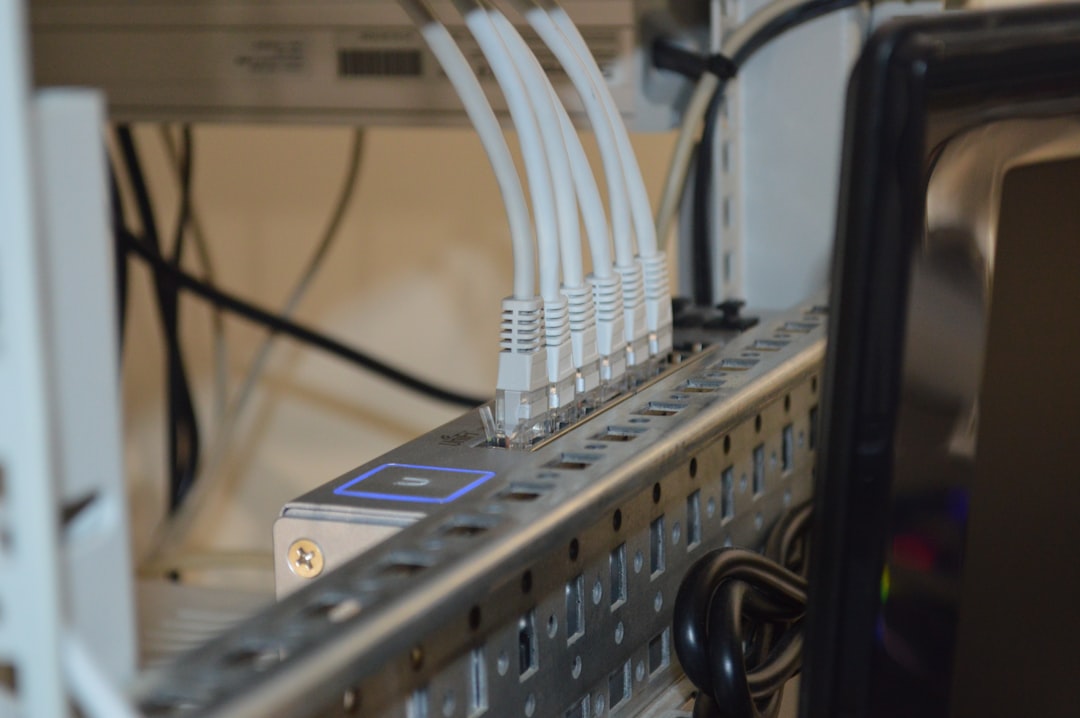What Are Contention Ratios and Why Do Leased Lines Provide Superior Internet Quality?
-
April 6, 2025
-
7 min read

Currently, organisations heavily rely on uninterrupted internet and network connectivity to run mission-critical operations. Be it financial institutions processing real-time transactions, healthcare providers managing patient data, or large enterprises supporting remote workforces, even a few minutes of downtime can result in substantial financial losses, reputational damage, and operational disruptions.
One of the most effective ways to maintain continuous connectivity is by deploying redundant leased lines. Unlike standard broadband connections, leased lines offer dedicated, uncontended bandwidth with symmetric upload and download speeds. When combined with redundancy, they provide a rock-solid foundation for business continuity, so that network failures, ISP outages, or cable cuts do not cripple operations.
This article gets into how redundant leased lines work, why they are critical for high-availability systems, and how businesses can implement them effectively.
What is a Leased Line?
A leased line is a dedicated fiber-optic or copper connection that provides constant, high-speed internet and data transfer between two locations. Unlike broadband, which is shared among multiple users, leased lines offer:
- Guaranteed Bandwidth: No slowdowns during peak hours.
- Low Latency: Ideal for real-time applications like VoIP, stock trading, and video conferencing.
- Symmetric Speeds: Equal upload and download speeds for seamless data exchange.
- SLA-backed Reliability: Guaranteed uptime and quick fault resolution from service providers.
Leased lines are widely used in sectors such as banking, healthcare, IT, e-commerce, and manufacturing, where uninterrupted connectivity is non-negotiable.
What is Redundancy in Leased Lines?
A redundant leased line is a fail-safe connectivity solution designed to eliminate single points of failure in an organization’s network. Instead of depending on a single leased line, businesses implement multiple independent leased lines to have continuous internet access.
Types of Redundant Leased Line Configurations
- Dual Leased Lines (Active-Active or Active-Passive)
- Two separate leased lines from different Internet Service Providers (ISPs).
- In active-active mode, both connections run simultaneously, balancing traffic.
- In active-passive mode, one connection acts as a backup, activating only when the primary fails.
- Leased Line with Wireless Backup
- A dedicated leased line supplemented by a high-speed wireless connection (4G/5G).
- Used in industries where even a fraction of a second in connectivity loss is unacceptable.
- Diverse Path Leased Lines
- Two leased lines routed via separate physical paths to prevent failures due to fibre cuts or infrastructure damage.
- SD-WAN Redundancy
- Uses Software-Defined Wide Area Networking (SD-WAN) to dynamically switch between multiple leased lines based on real-time network performance.
Businesses that rely on office broadband internet but cannot afford even a second of downtime are increasingly adopting redundant leased lines to maintain uninterrupted workflow.
How Redundant Leased Lines Prevent Downtime?
Redundant leased lines prevent downtime through multiple methods:
- Automatic Failover Mechanism: Modern redundant leased lines come with automatic failover capabilities. If the primary leased line experiences an outage, the system instantly switches to the backup line, ensuring continuous connectivity. This transition is seamless and often imperceptible to end users.
- Load Balancing for Higher Efficiency: In an active-active setup, traffic is intelligently distributed between multiple leased lines. This not only prevents congestion but also enhances network performance, reducing latency and improving speed.
- Protection Against Physical Failures: Cable damage due to construction work, natural disasters, or hardware failures is a leading cause of downtime. Redundant leased lines with diverse paths guarantee that even if one connection is physically severed, the secondary line remains operational.
- Increased Security and Reliability: Unlike shared office broadband internet, leased lines offer dedicated bandwidth. With redundancy, businesses gain enhanced security against cyber threats, as multiple secure routes are available, reducing the risk of single-point attacks.
- Consistency in Business Operations: For companies using corporate postpaid solutions such as cloud-based applications, VoIP, and real-time collaboration tools, redundancy helps employees remain connected, customers experience uninterrupted service, and business operations continue smoothly.
How to Implement Redundant Leased Lines Effectively?
Simply having multiple leased lines is not enough. Businesses must adopt best practices to maintain seamless failover and maximum uptime.
1. Choose Two Independent ISPs
Select two ISPs with strong service-level agreements (SLAs). Make sure they have independent infrastructures, so a failure in one does not affect the other.
Important to Know: Moreover, you can even opt for integrated redundancy with a single provider. Reliable providers, such as Airtel, offer redundant links that can fulfill all your redundancy needs through a single service. This option might be sufficient for businesses looking for streamlined operations and simpler management, as Airtel ensures redundancy within their network.
2. Opt for Diverse Routing
The two leased lines must take separate physical routes. This prevents a single point of failure from disrupting both connections.
Best Practice: If one leased line runs underground, the backup could be an aerial fibre or wireless link.
3. Deploy an Intelligent Load Balancer
A load balancer intelligently distributes traffic across multiple leased lines. It ensures:
- Automatic failover in case of a link failure.
- Optimized bandwidth usage by distributing traffic efficiently.
- Prioritisation of mission-critical applications.
4. Implement BGP for Seamless Failover
Border Gateway Protocol (BGP) allows businesses to automatically switch between ISPs in case of an outage. This means uninterrupted access without manual intervention.
5. Monitor and Test Regularly
Redundant leased lines must be continuously monitored using Network Monitoring Tools to detect and resolve issues proactively. Conduct failover tests periodically to verify that the backup system works as expected.
Key Industries Benefiting from Redundant Leased Lines
While any business can suffer from network downtime, some industries are more vulnerable due to the nature of their operations. For these sectors, even a few seconds of lost connectivity can lead to financial losses, security risks, and operational failures.
Here’s how redundant leased lines provide critical protection in various industries:
1. Banking & Financial Services
- Real-time transactions require uninterrupted connectivity.
- Redundant leased lines help banking apps, ATMs, and online banking services remain functional 24/7.
2. IT & Software Companies
- Remote work, cloud computing, and large-scale data transfers need consistent high-speed internet.
- SD-WAN-based leased lines improve redundancy and security.
3. Healthcare & Telemedicine
- Patient data access, video consultations, and digital health records demand zero downtime.
- Hospitals implement leased line redundancy to avoid critical failures.
4. Manufacturing & Industrial Automation
- Smart factories rely on IoT and real-time monitoring.
- A redundant leased line makes sure that automated systems remain operational without network interruptions.
5. E-Commerce & Retail
- Online platforms suffer revenue loss during downtime.
- Redundant connectivity means smooth order processing and payment transactions.
Airtel Dedicated Internet Leased Line Services: Reliable and High-Speed Connectivity
Airtel’s Dedicated Internet Leased Line (DILL) is a premium connectivity solution designed for businesses that demand uninterrupted, high-speed, and secure internet access. Unlike shared office broadband internet, it provides dedicated symmetrical bandwidth to offer equal upload and download speeds for smooth operations.
Key features of Airtel dedicated internet leased line services are:
- 5% Uptime Guarantee: Helps mission-critical operations run without interruptions.
- Redundant Network Architecture: Prevents downtime with backup connectivity.
- Scalable Bandwidth: Ranges from 10 Mbps to 1 Gbps to support growing business needs.
- Unmatched Security & Reliability: End-to-end SLA-backed security with DDoS protection for enterprise-grade security.
- 24/7 Enterprise Support: Proactive monitoring and dedicated assistance means fast issue resolution.
If your business relies on seamless internet for daily operations, investing in Airtel internet leased line solutions is not an option; it’s a must-have.
Conclusion
For mission-critical operations, network downtime is not an option. Redundant leased lines ensure uninterrupted connectivity, smooth operations, and high security, making them a necessity for industries like banking, IT, healthcare, and manufacturing. By implementing a failover strategy with dual leased lines, SD-WAN, and diverse routing, businesses can eliminate connectivity risks and maintain peak efficiency.
For enterprises looking for a reliable, high-speed, and scalable internet solution, Airtel Internet Leased Line offers dedicated bandwidth, 99.5% uptime, and enterprise-grade security. Backed by 24/7 support and a reliable network, you can rest assured that your business stays online—always.
 Share
Share









